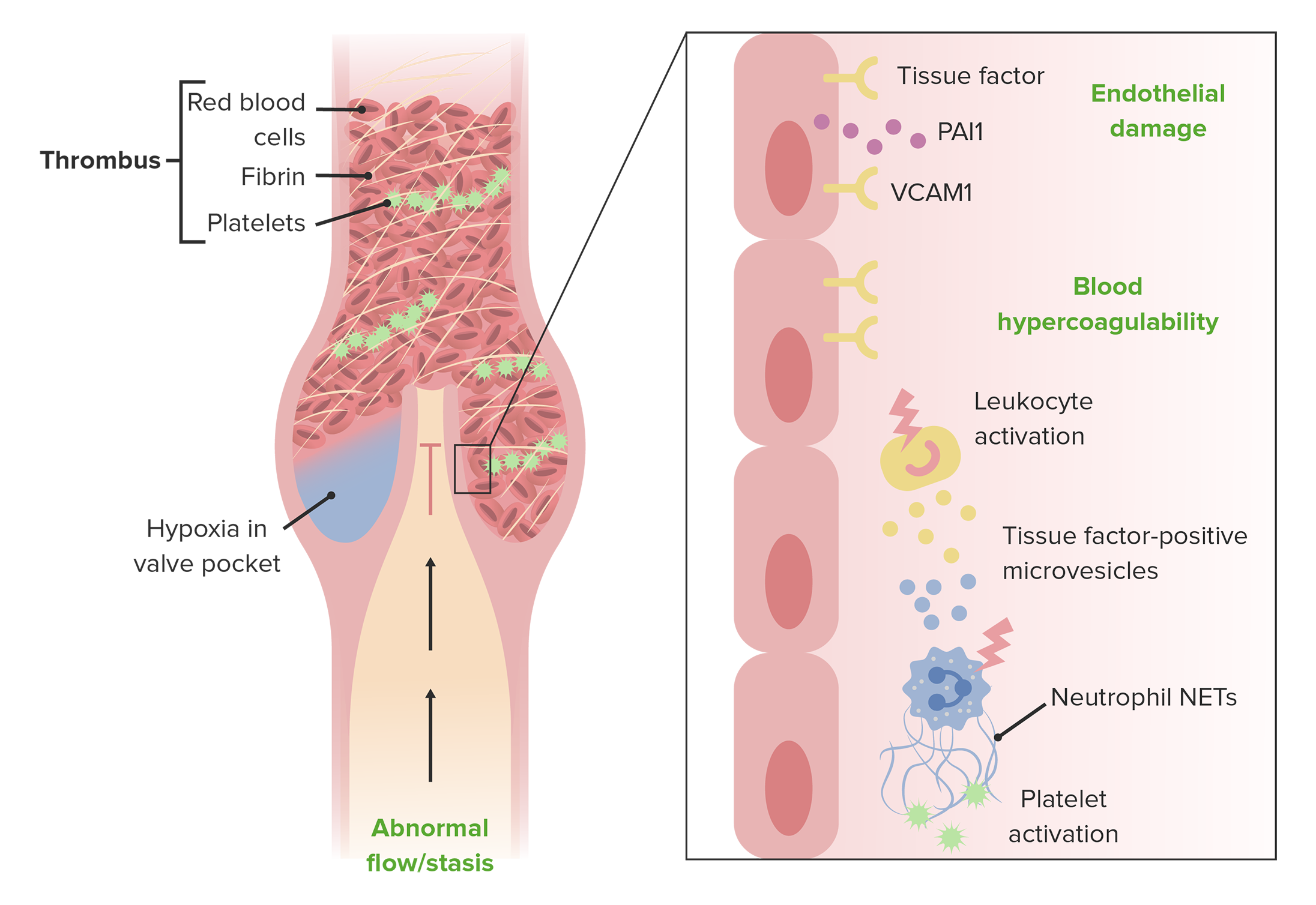Playlist
Show Playlist
Hide Playlist
Thrombosis: Consequences of Venous Thromboembolism
-
Slides 08 VascularMedicine advanced.pdf
-
Reference List Vascular Medicine.pdf
-
Download Lecture Overview
00:01 Again, the consequences of venous thromboembolism are clear. There can be fatality if the pulmonary circulation is markedly occluded. This can happen suddenly. There can be acute mortality. 00:16 There can be recurrence. So the patient may have an episode of pulmonary embolism. He’s sick, gets better, goes home from the hospital. Once they’ve had one episode, they’re at high risk for another episode. And often that’s because they develop recurrent thrombophlebitis. 00:29 They have a tendency to develop this inflammatory clotting disorder in the veins and then, of course, for pieces of it to break off. 00:38 Sometimes the veins get completely occluded with the clot and then they can cause something I will talk about later called post-thrombotic syndrome in which the patient experiences chronic swelling of the leg. And even ulcers and really a very, very unpleasant sequence of events can occur with a lot of clotting in the venous system. 01:08 The definition of thrombophlebitis is of course the presence of thrombus in a vein. It’s almost always accompanied by an inflammatory process in the vein wall. As I’ve said before, it can affect superficial veins when it’s usually not very serious and often as a result of some minor trauma. And it can be treated with just some local heat and maybe some aspirin or ibuprofen. When it gets in the deep veins, that’s when there’s a much greater potential for pulmonary embolism. As we said, pulmonary embolism can be fatal. And there are a whole variety of risk factors for developing thrombophlebitis: long periods of bed rest, long airplane trips, cancer, heart failure, severe lung disease… A lot of these place patients at higher risk for developing thrombophlebitis and pulmonary embolism. 02:02 I mentioned before the post-thrombotic syndrome. This is a very serious complication of venous thrombosis. It’s a long-term complication of deep venous thrombosis. What happens is you occlude enough of the veins in the lower leg so that it is difficult for blood arriving in the muscles and skin of the leg to get out of the leg. So you have pooling of blood there, you have increased pressure from standing, from gravity. This results in much more fluid getting out of the capillaries that can be resorbed. So you have swelling. And then with all of this swelling, it actually impairs arterial flow from getting into the tissues and you may have necrosis – or death of tissues – and development of an ulcer as you can see from the picture here. 02:53 A number of symptoms are related to the post-thrombotic syndrome: there can be pain or heaviness in the leg; itching or tingling; as I’ve already mentioned, edema swelling; development of severe varicose veins; brownish or reddish skin discoloration from red blood cells being deposited in the skin. And, of course, the worst complication is ulcers. And even, occasionally, the ulcer gets infected and this could lead to amputation. So the post-thrombotic syndrome can be very, very severe.
About the Lecture
The lecture Thrombosis: Consequences of Venous Thromboembolism by Joseph Alpert, MD is from the course Venous Diseases.
Included Quiz Questions
The consequences of deep venous thrombosis/pulmonary embolism include all but one of the following. Identify the INCORRECT consequence.
- The development of leukemia.
- Increased risk of death.
- The development of post-thrombotic leg syndrome.
- The development of recurrent venous thromboembolism.
Thrombophlebitis is described as which of the following?
- A clot with inflammation.
- A clot with RBC.
- A clot that is partially detached.
- A clot in the arterial circulation.
- A clot that is free in blood.
Customer reviews
5,0 of 5 stars
| 5 Stars |
|
5 |
| 4 Stars |
|
0 |
| 3 Stars |
|
0 |
| 2 Stars |
|
0 |
| 1 Star |
|
0 |





